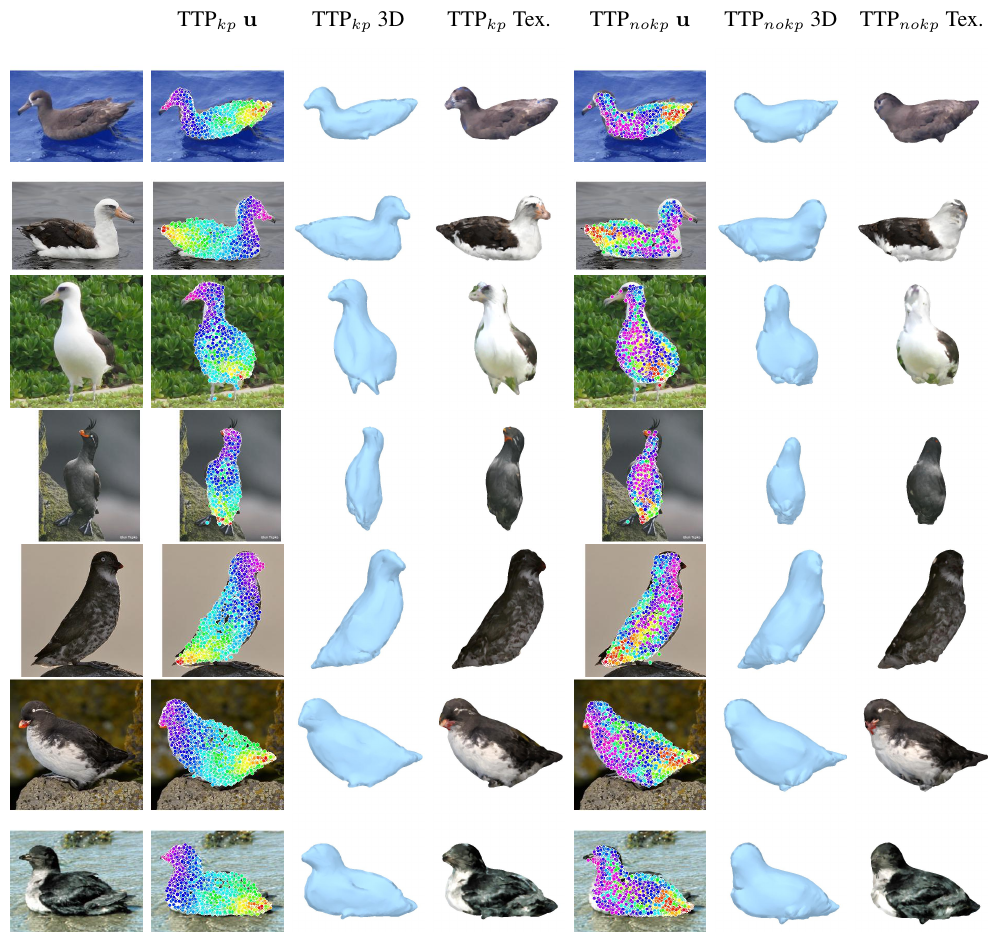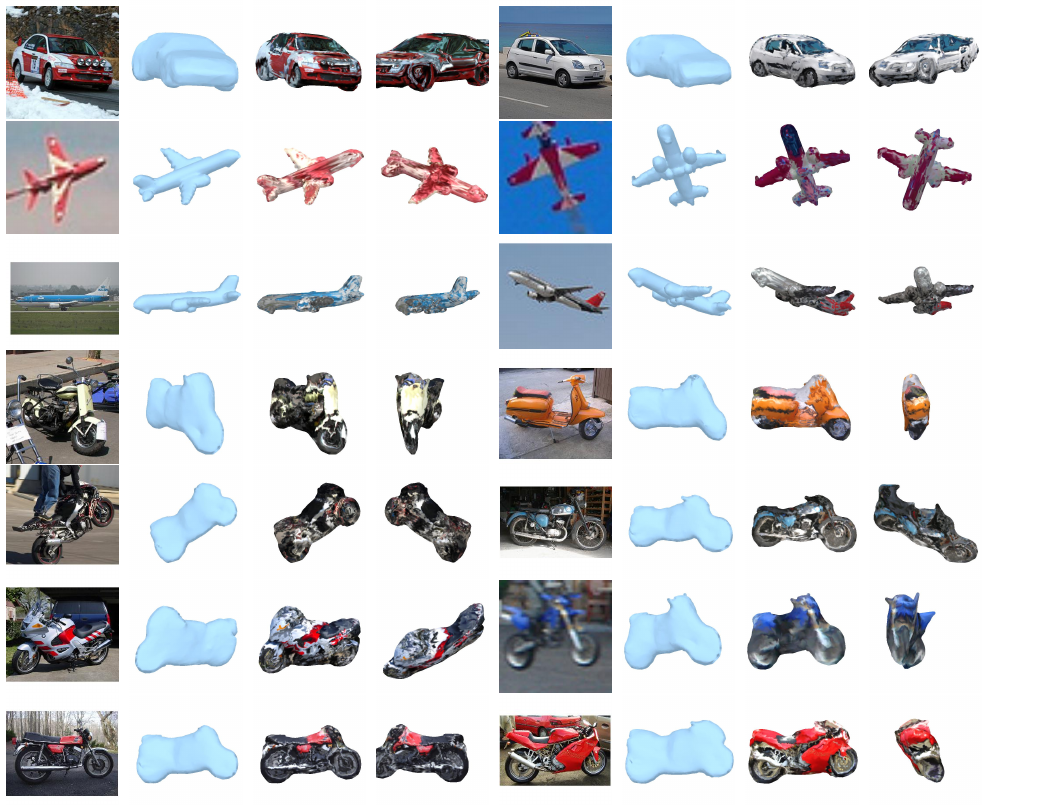
|
Given an image we use a network φ to regress the 2D positions u corresponding to the 3D vertices of a template; we then use a differentiable optimization method to compute the rigid (camera) and non-rigid (mesh) pose: in every iteration we refine our camera and mesh pose estimate to minimize the reprojection error between $\m u$ and the reprojected mesh (visualized on top of the input image). The end result is the monocular 3D reconstruction of the observed object, comprising the object's deformed shape, camera pose and texture.
|



